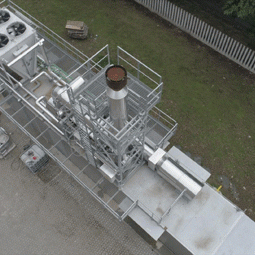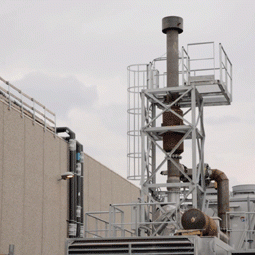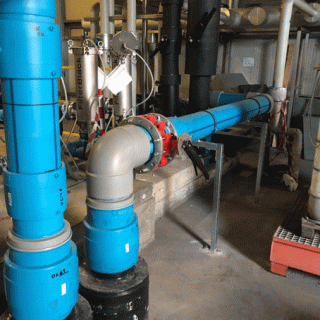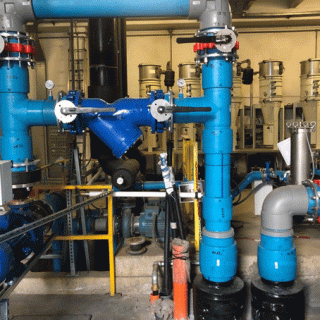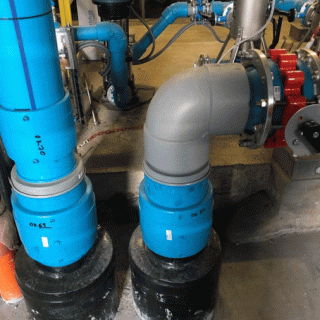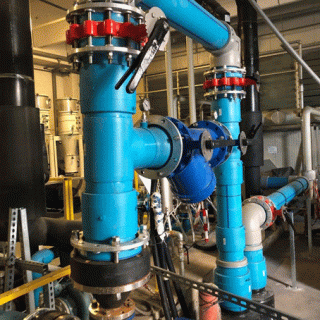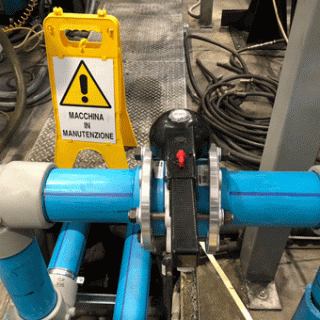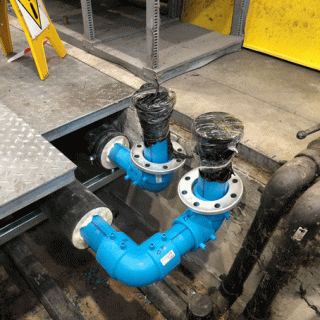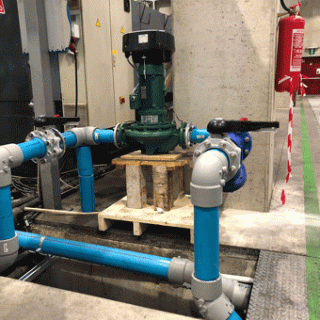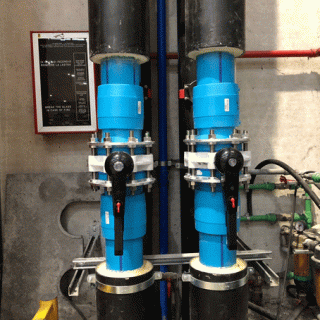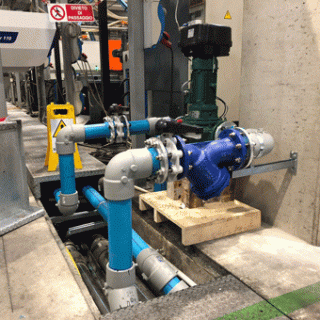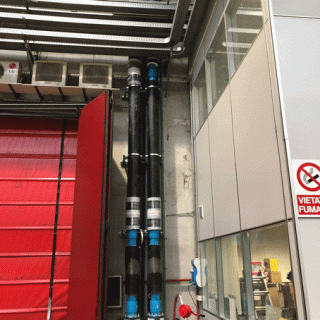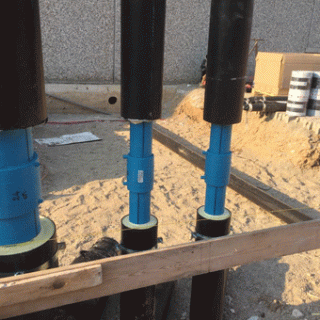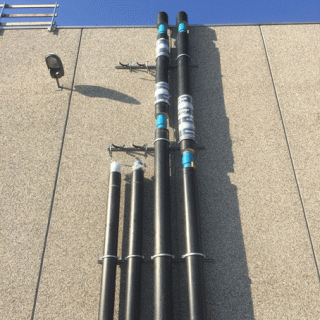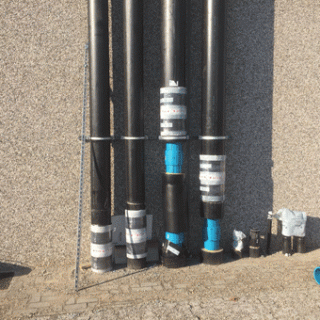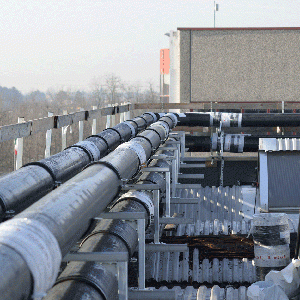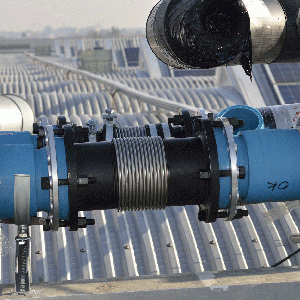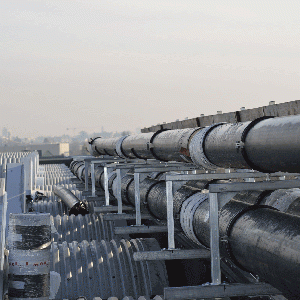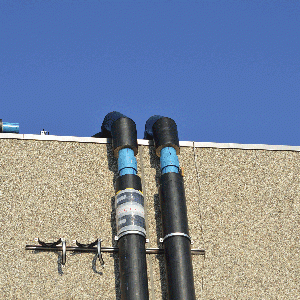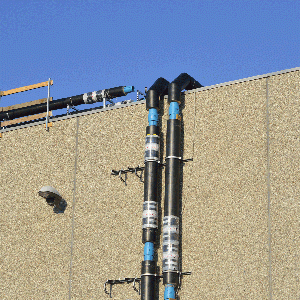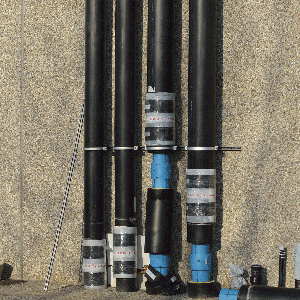NIRON PRE-INSULATED SYSTEM FOR A NEW TRIGENERATION POWER PLANT
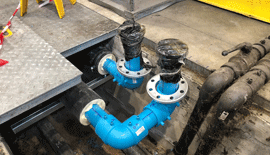
NIRON PREISOLATO and NIRON CLIMA pipes and fittings have been used for the trigeneration power plant of a plastics processing plant in Italy. The power plant is powered by methane gas and electricity is produced by an endothermic engine connected to an alternator. Through water absorption, the thermal energy produced by the production operations is transformed into refrigerating energy, intended for cooling the extrusion plants used in the plant. What makes this system the first of its kind is that NIRON technopolymer pipes have been used instead of traditional steel. Thanks to the pre-insulated pipes for the transport of the fluid to the users, a heating network has been created, which allows the transportation of the calories necessary to the company heating plant, and a cooling network for the transport of refrigerants to the users, i.e. refrigerators and injection molding machines used for molding products. The system allows the water to reach the plants at almost the same outlet temperature from the central heating/cooling plant. This innovative system of pre-insulated pipes and fittings is ideal for use in areas where the reduction of thermal losses is of fundamental importance. In addition to excellent technical performance, NIRON pipes, compared to steel pipes, are lighter and require easier processes for fixing the joints. This has greatly simplified the transport and the installation of the system elements, with a significant saving in construction times.
Trigeneration can be defined synthetically as an extension of Cogeneration. The latter is the combined production of electricity and heat from the same primary energy, usually a fuel. In Trigeneration, the production of air or cold water is added to the production of electricity and heat. More technically, the useful thermal energy is partly used to produce refrigerated water for air conditioning or industrial processes, through absorption refrigerators. Instead, by combining a cogeneration power plant with suitable absorption refrigerators, which generate cooling energy using heat as a source, instead of electricity, it is possible to exploit cogeneration plants even in the hot months when the demand for air conditioning is very high, or industrial sectors in which cooling systems are needed. Compared to ordinary electricity cogeneration plants, in a trigeneration system the global efficiency increases thanks to a better exploitation of the calorific value of the fuel. Whereas conventional thermoelectric plants convert about 30% of the energy of the fuel into electricity and the remaining 70% is lost in heat, with a trigeneration power plant more than 80% of the fuel is exploited, both as a heating source and as energy to feed an absorption cycle for the refrigeration of buildings or fluids. The trigeneration has significant advantages, including a reduction in fuel consumption, a reduction in energy transmission losses, a consequent reduction in environmental impact and an economic saving in the medium/long term, thanks to the lower amount of fuel consumed and to tax benefits that are currently applied to alternative energy systems.
The plant started operating in record time, nine months after obtaining the necessary authorizations. The electrical power absorbed by the plant is equal to 6,640,728.00 kWh/year of which about 22% is attributable to the electric absorption of refrigeration compressors (about 1,461,000 kWh/year). The cogeneration power plant delivers 100% of the nominal electric power on a constant basis for about 6,500 hours/year, guaranteeing the self-production of an electricity quantity equal to 4,673 MWhe per year compared to the total requirement of the plant. The production of chilled water is constantly operating for 7.920 hours/year as regards the cooling of the molding machines, while the refrigeration units serving the office building have a seasonal operation. On an annual basis, the cogeneration power plant will provide the plant with 3,041 MWhf compared to a requirement of 4,382 MWhf.

